Mock disaster provides realistic rehearsal for coordinated response
Thursday, May 11, 2023
Photos by Cindy Davis Meixel, writer/photo editor
Applying what they’ve learned in the classroom, Pennsylvania College of Technology emergency management and paramedic students put their skills to the test this past weekend in the programs’ first on-campus simulated disaster incident.
“Our first Mass Casualty Incident Full-Scale Exercise, which was loosely based on the real-world 2013 Boston Marathon bombing, was a great way for students to practice the coordination that occurs between on-scene first responders and emergency management personnel, who are generally behind-the-scenes and not seen by the public,” explained David E. Bjorkman, instructor of emergency management and homeland security. “While paramedic students triaged casualties, our emergency management students supported on-scene efforts using our on-scene Emergency Management Mobile Command Post to communicate information and resource requests to students working out of the classroom Emergency Operations Center based across campus from the incident site.”
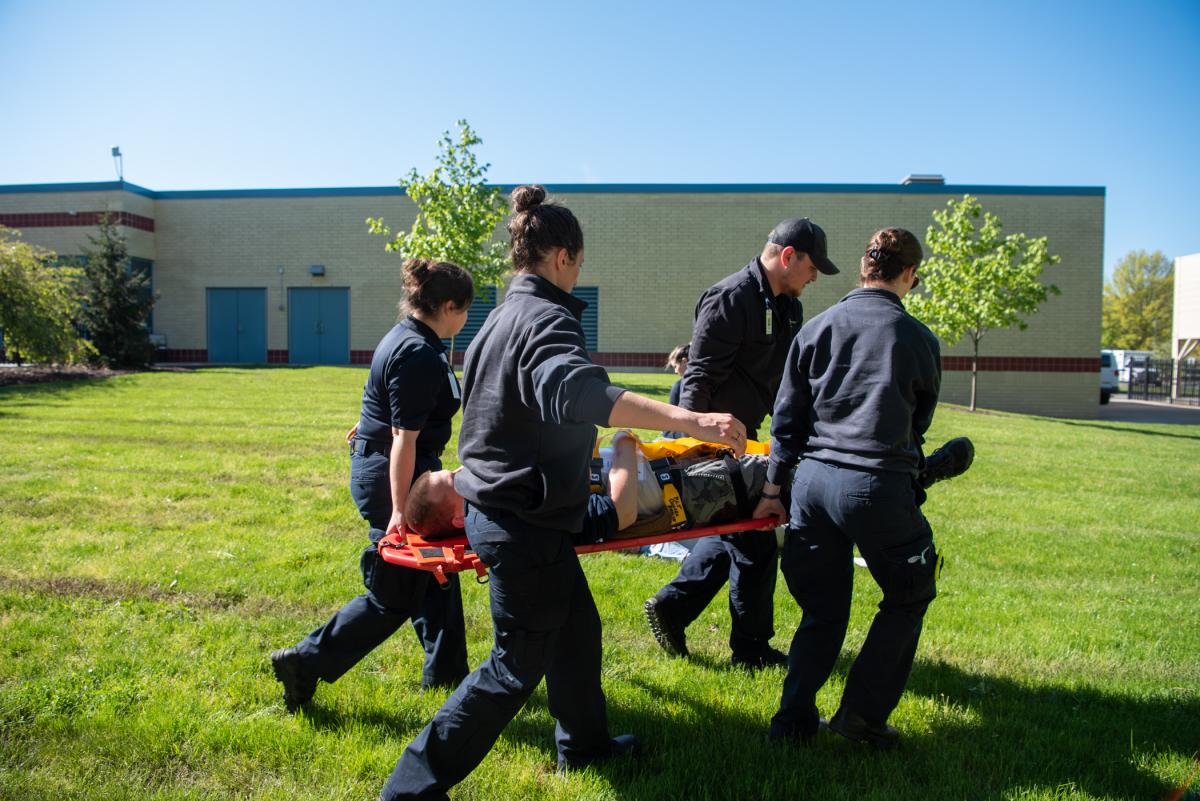
A real-life reaction to a simulated scenario
The mock disaster, centering around a pipe bomb explosion, was staged on the patio of the Bush Campus Center, with the EOC and Simulation Cell operating out of the fourth and first floors, respectively, of the Klump Academic Center. Penn’s Inn, on the second floor of the Campus Center, was utilized for pre- and post-event briefings, as well as a luncheon for participants. The lunch was sponsored by MCM Consulting Group, a consulting firm dedicated to serving the public safety, education, government and health care community.
“Public safety is what we do, too, so we thought it would be a great opportunity to engage and support people who are teaching emergency management, which is such an important and necessary field,” said Kristy S. Agosti, president/CEO of MCM Consulting Group.
The company, based in State College, hires Penn College emergency management & homeland security graduates and provides paid internships to students, and as part of its evolving partnership with the college, MCM Consulting agreed to sponsor the post-exercise luncheon.
Civil Air Patrol cadets from squadrons in four counties – Blair, Centre, Columbia and Lycoming – played the roles of mock victims, with additional support from some of their parents. UPMC Susquehanna, Lycoming County Emergency Management Agency, and Penn College Police also shared equipment and logistical support for the exercise, which spanned four hours.
Emergency management & homeland security graduating seniors Michael I. McNary, of Phoenixville, and Alyssa Rusnock, of Ovid, New York, designed the exercise’s Master Scenario Events List.
“The joint training exercise between the Emergency Management Program and Paramedic Program provided an opportunity for collaboration and learning in a variety of ways,” said Brady L. Breon, paramedic program director and assistant professor. “The Paramedic Program junior and senior students were able to practice working together as a team to manage a Mass Casualty Incident.
"During the exercise, the paramedic students were able to apply triage skills that they learned in class to sift and sort a large number of injured patients. Then, the students also had to consider treatment that would be provided for the multitude of injuries that were encountered. Additionally, in collaboration with the Emergency Management Program students, the paramedic students had the opportunity to function within the incident command system at a large-scale incident. In the real world, individuals in both professions work together closely during major incidents and disasters.”
Penn College offers a Bachelor of Science in emergency management & homeland security (online and on campus); an Associate of Applied Science in paramedic science; and a certificate in paramedic practice.
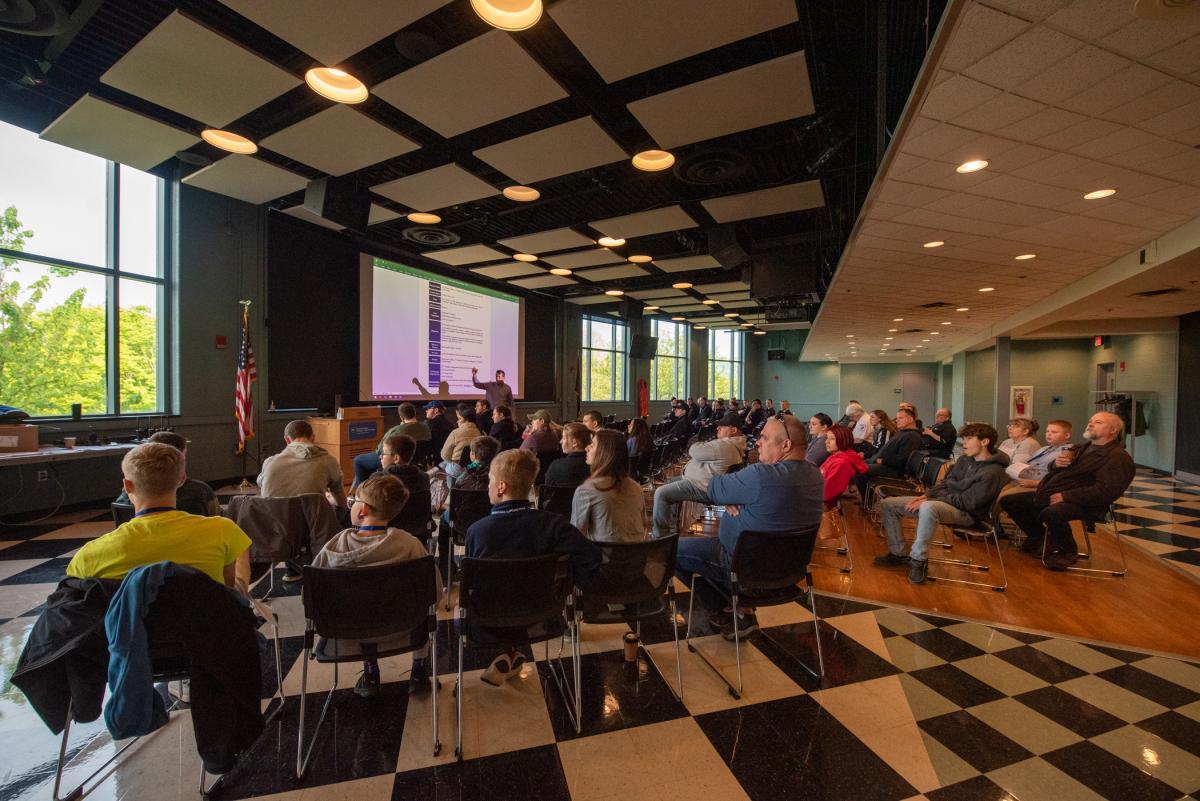
In Penn’s Inn, Bjorkman provides pre-exercise information to the participants.
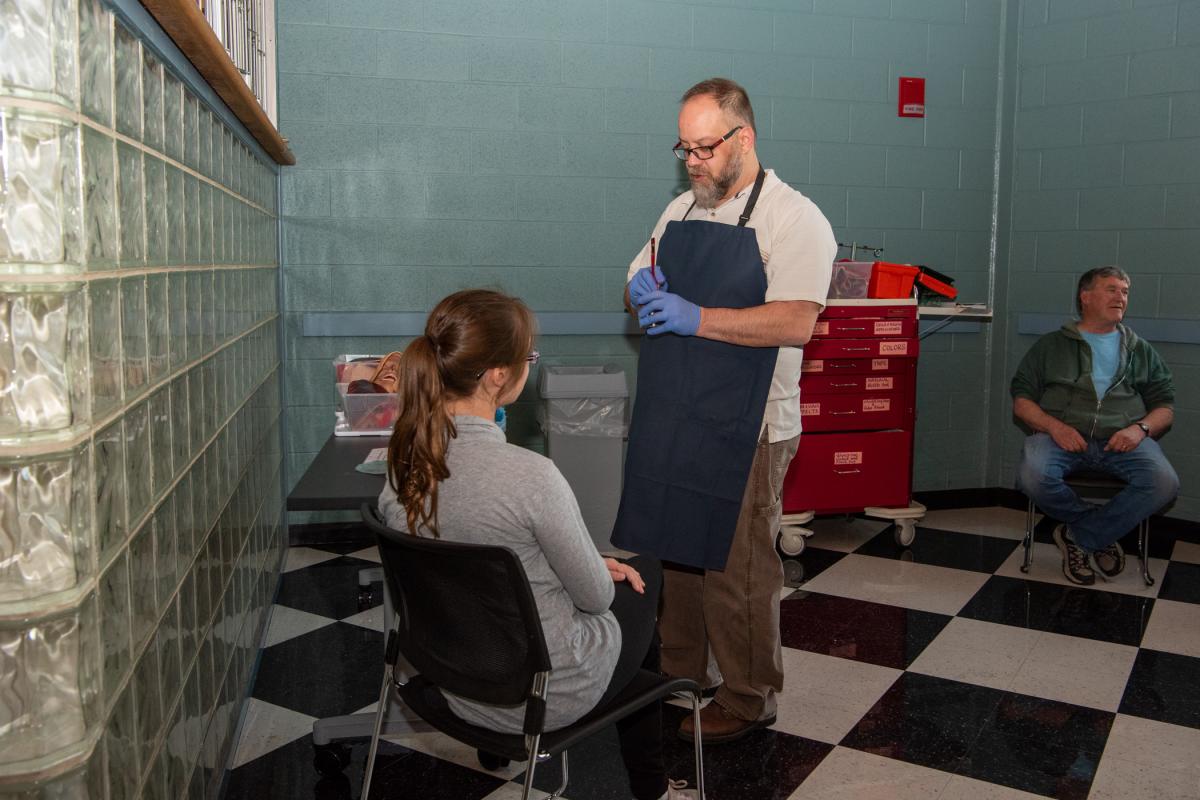
A corner of the room is reserved for moulage (mock injuries for training emergency response teams). John A. Nappi, paramedic programs coordinator, begins work on a volunteer.
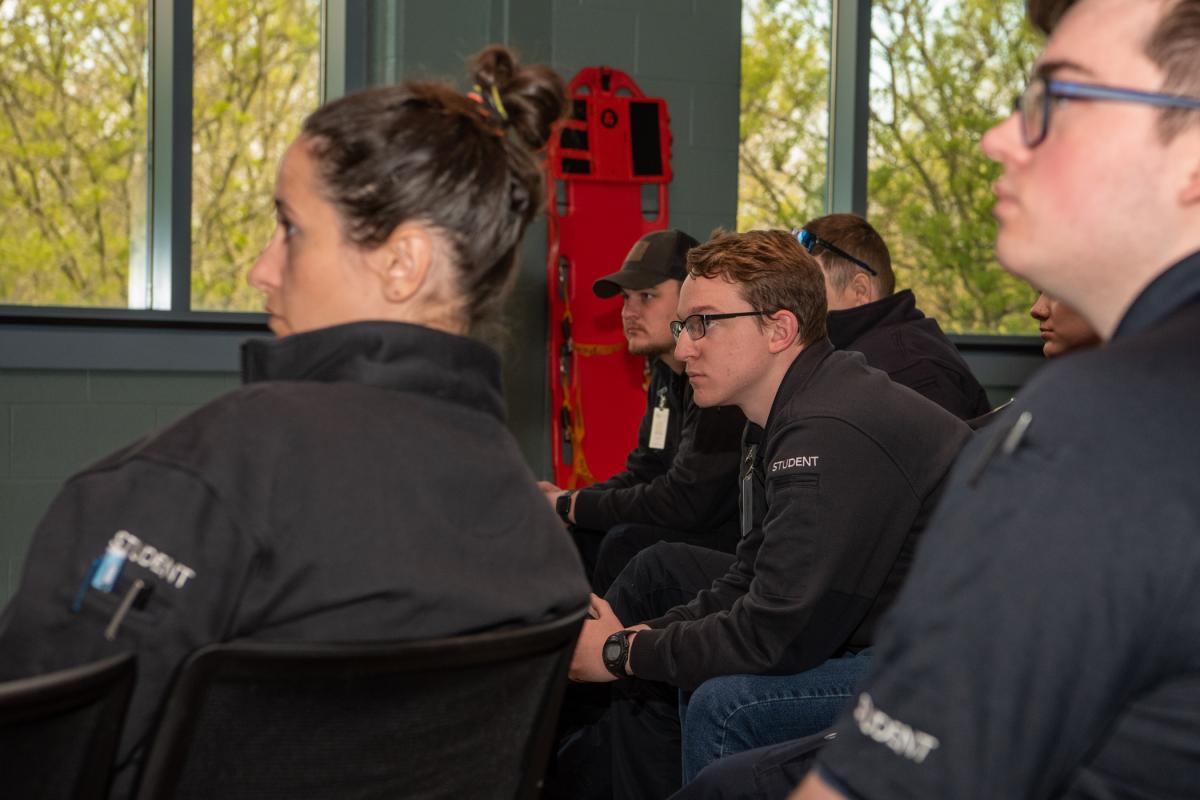
Students, including Cole N. Hillyer (center), of Renovo, listen intently to Bjorkman’s briefing. Hillyer was assigned the role of incident commander for the exercise. He is enrolled in the emergency management and paramedic majors.
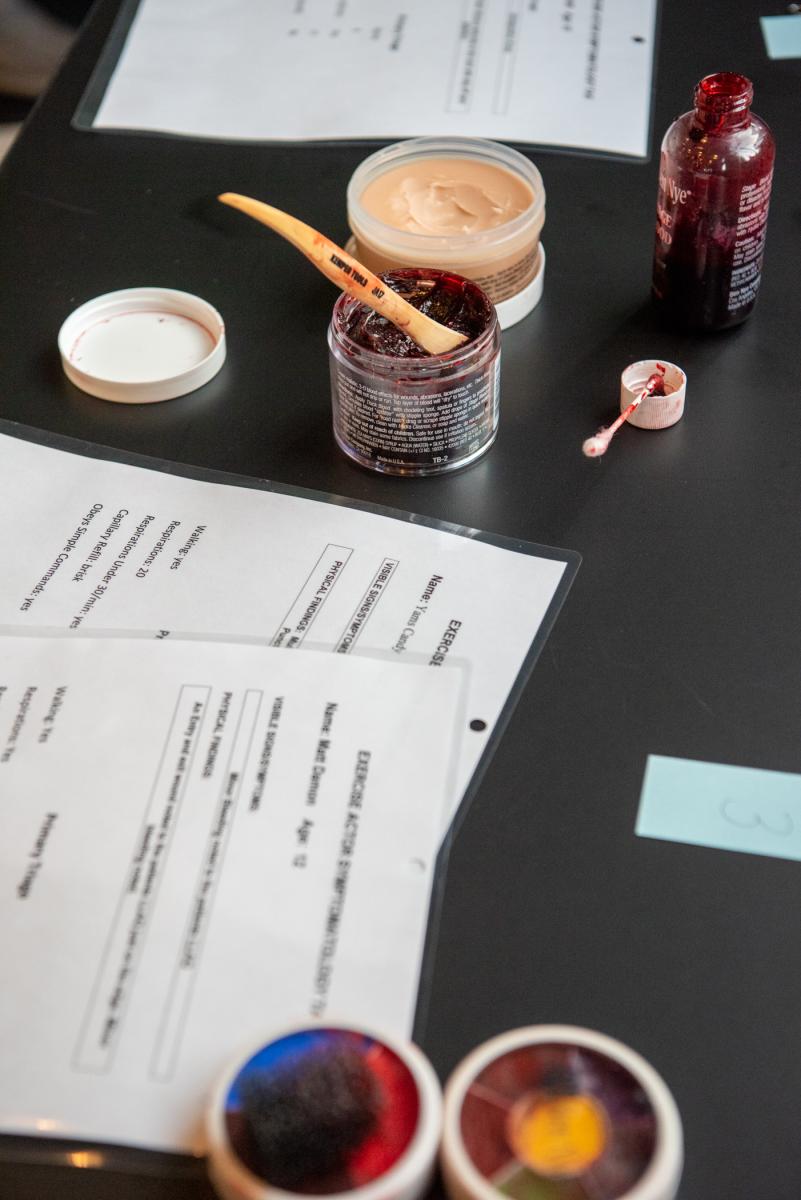
Moulage tools
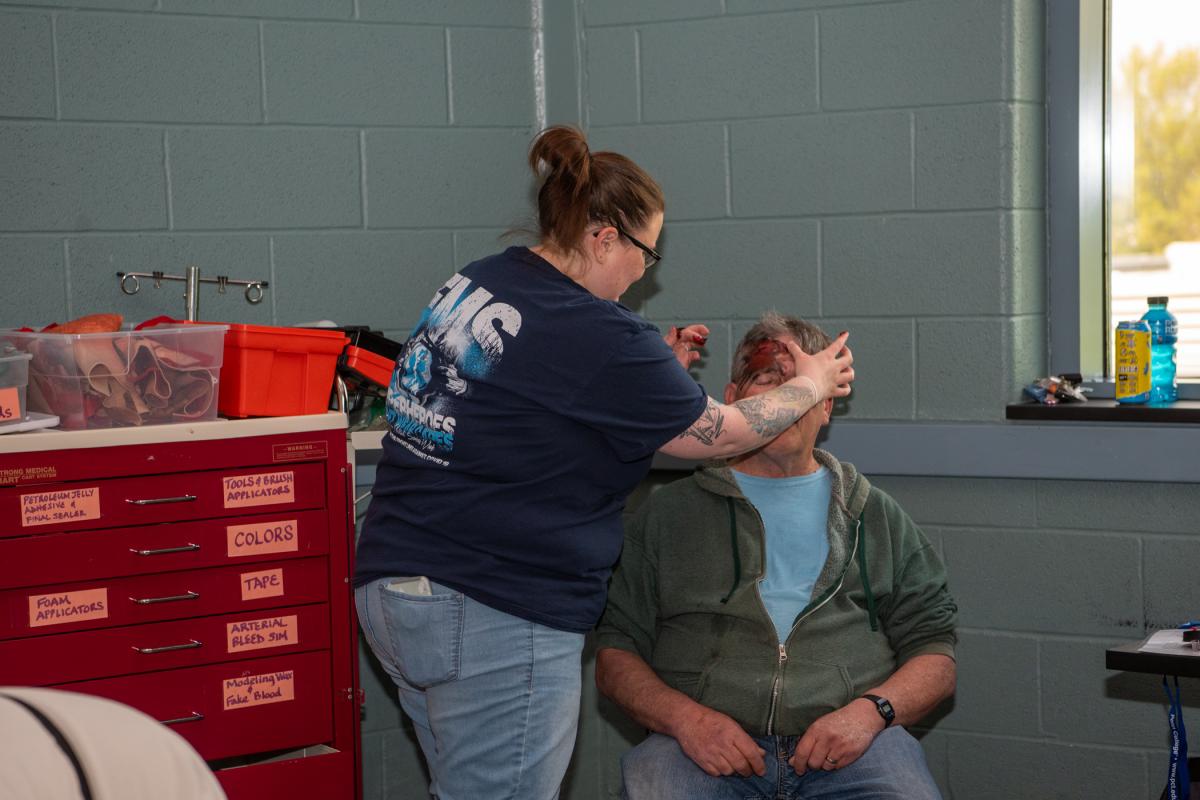
A Civil Air Patrol volunteer sits for his moulage session.
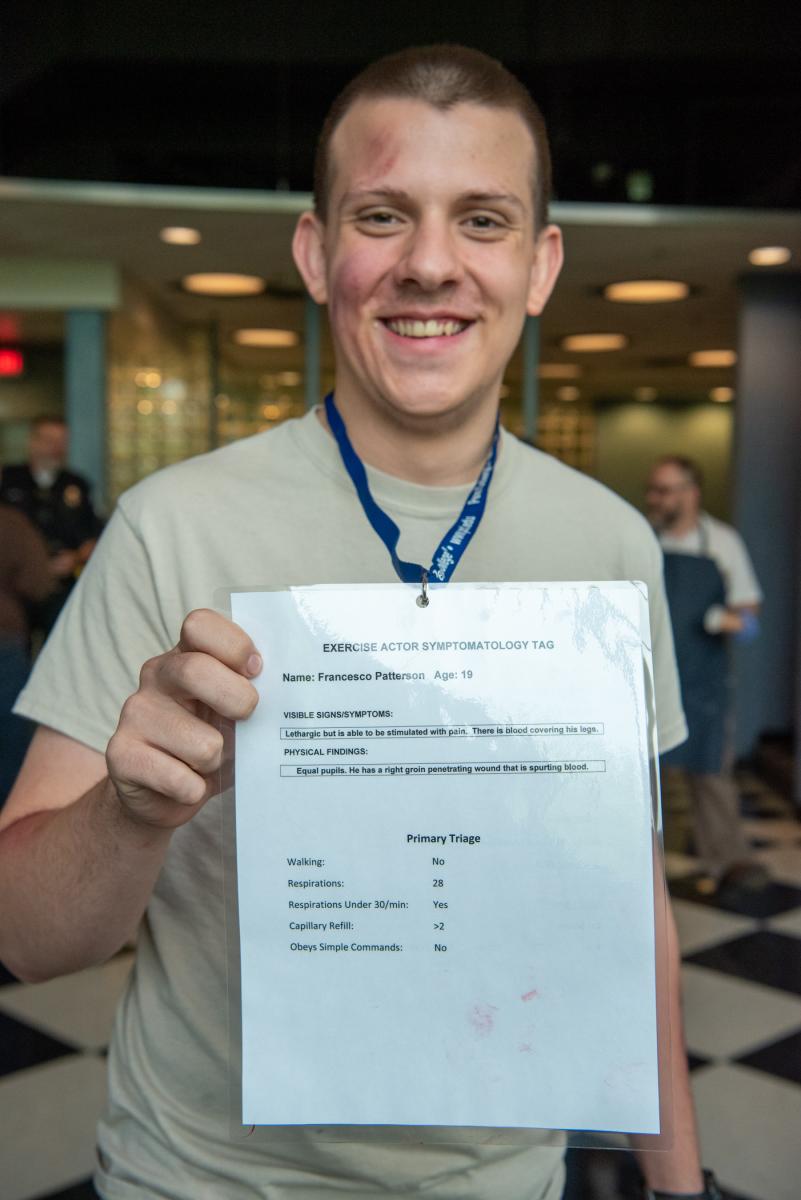
As with this Civil Air Patrol cadet, each volunteer who role-played a “victim” was given an “actor symptomatology tag.”
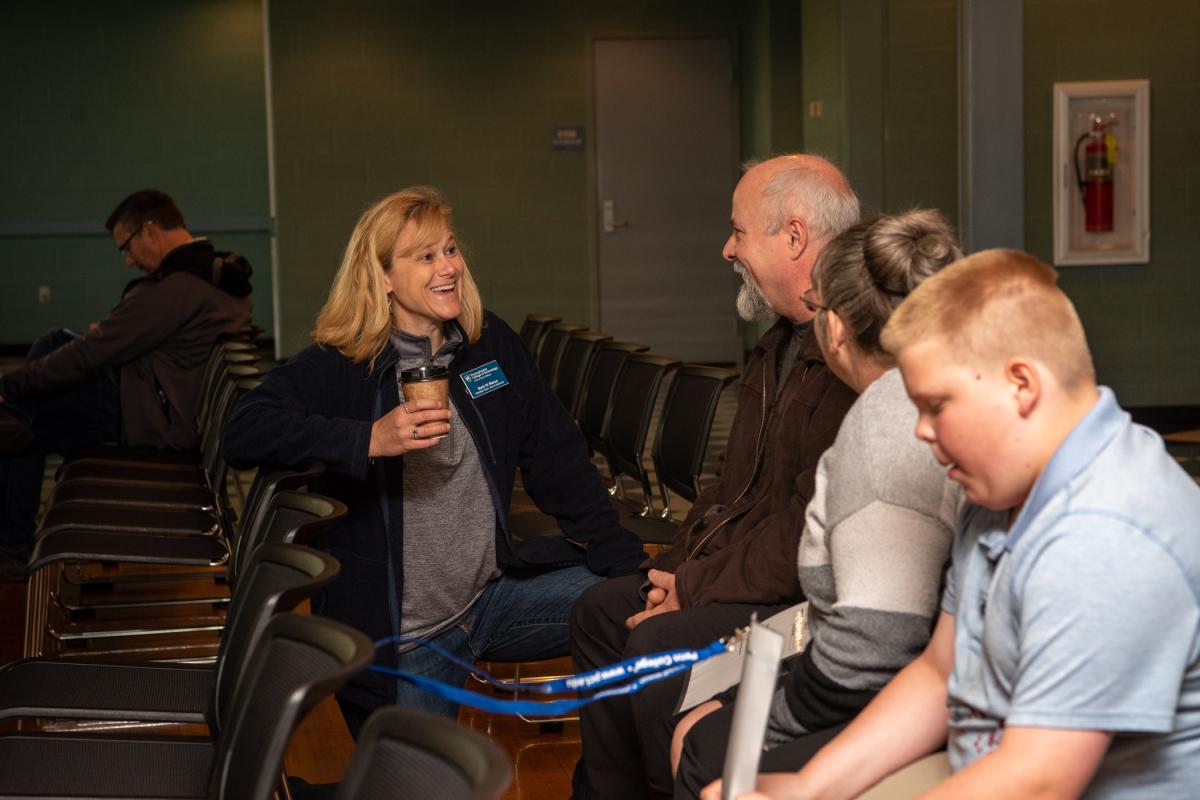
Barb F. Di Marco, assistant dean of arts and sciences, chats with a family, including two young volunteers who are interested in pursuing first responder and health care careers in the future.
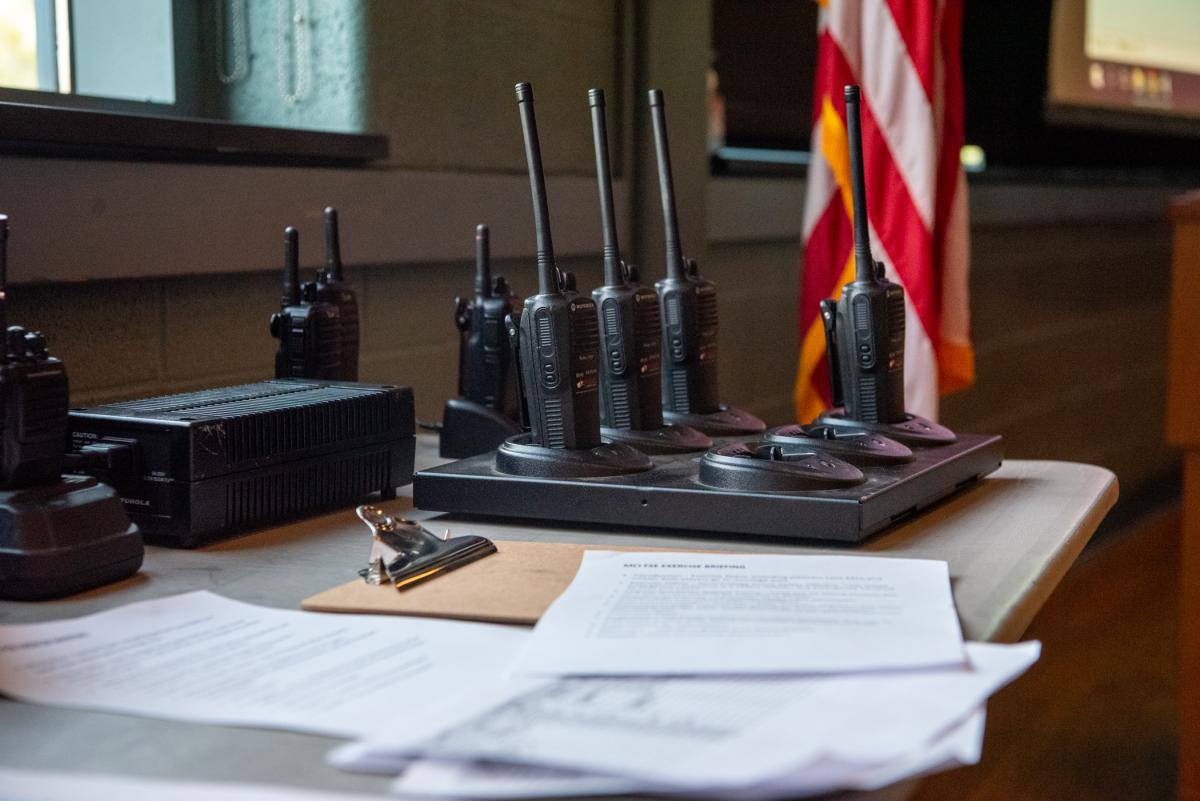
Tools of the trade
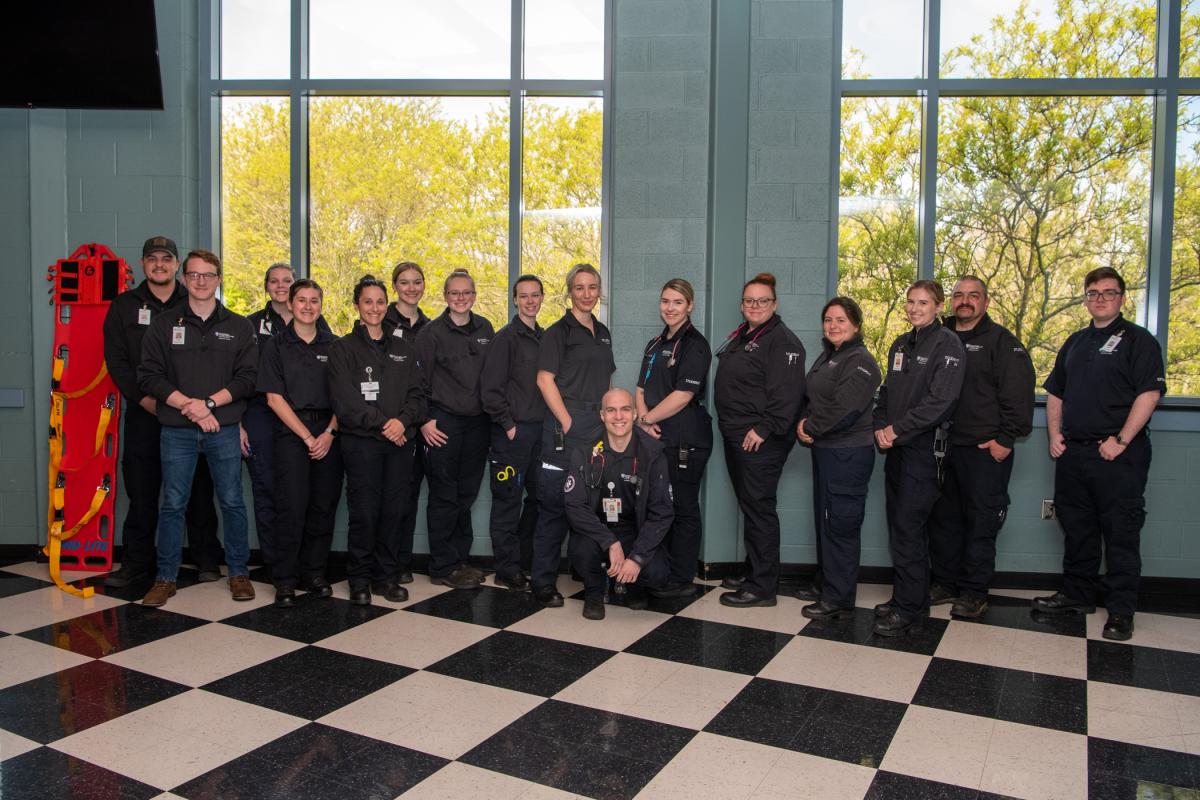
The paramedic students stand ready.
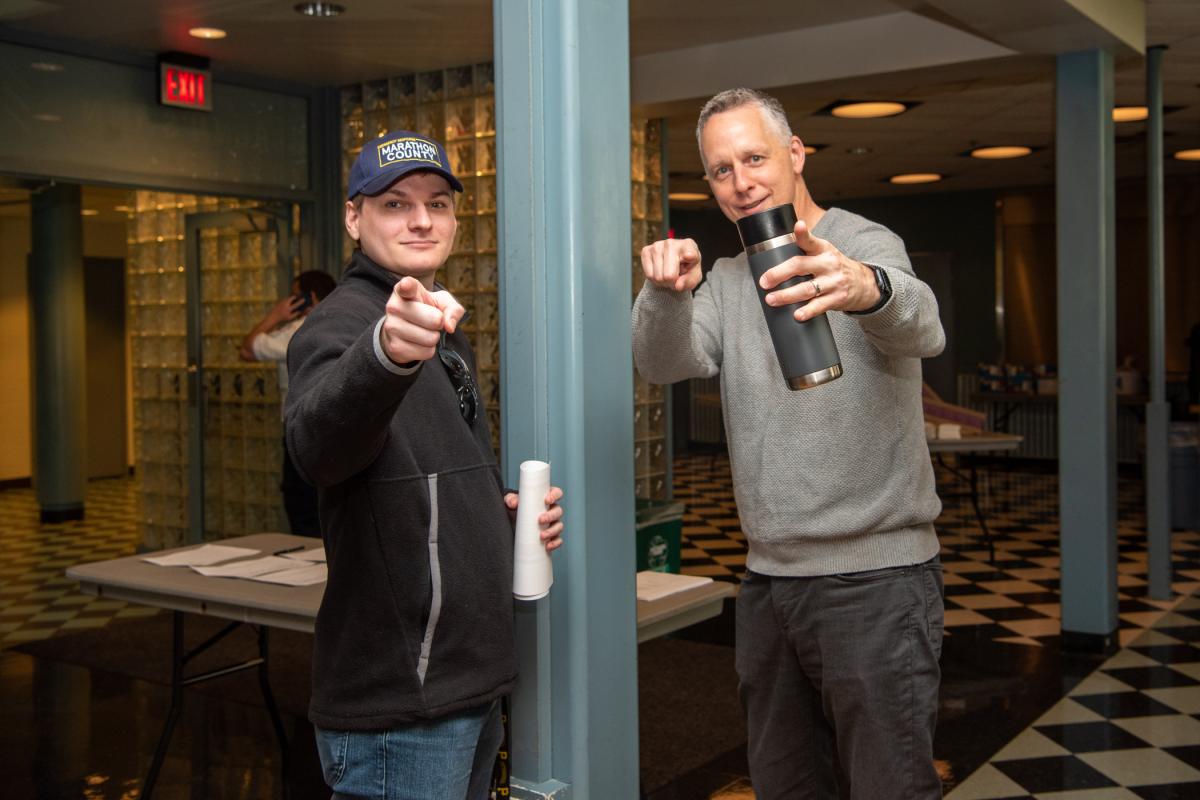
On hand as spectators were alumnus Evan J. Kelbaugh, ’21, emergency management technology, and President Michael J. Reed. Kelbaugh, who was working in emergency management in Wisconsin, has returned to his native Bucks County for a new job in the field.

Setting the scene, Penn College Police Officer Jeffrey E. Kriner (center foreground) and Bjorkman (in vest) attend to their duties.
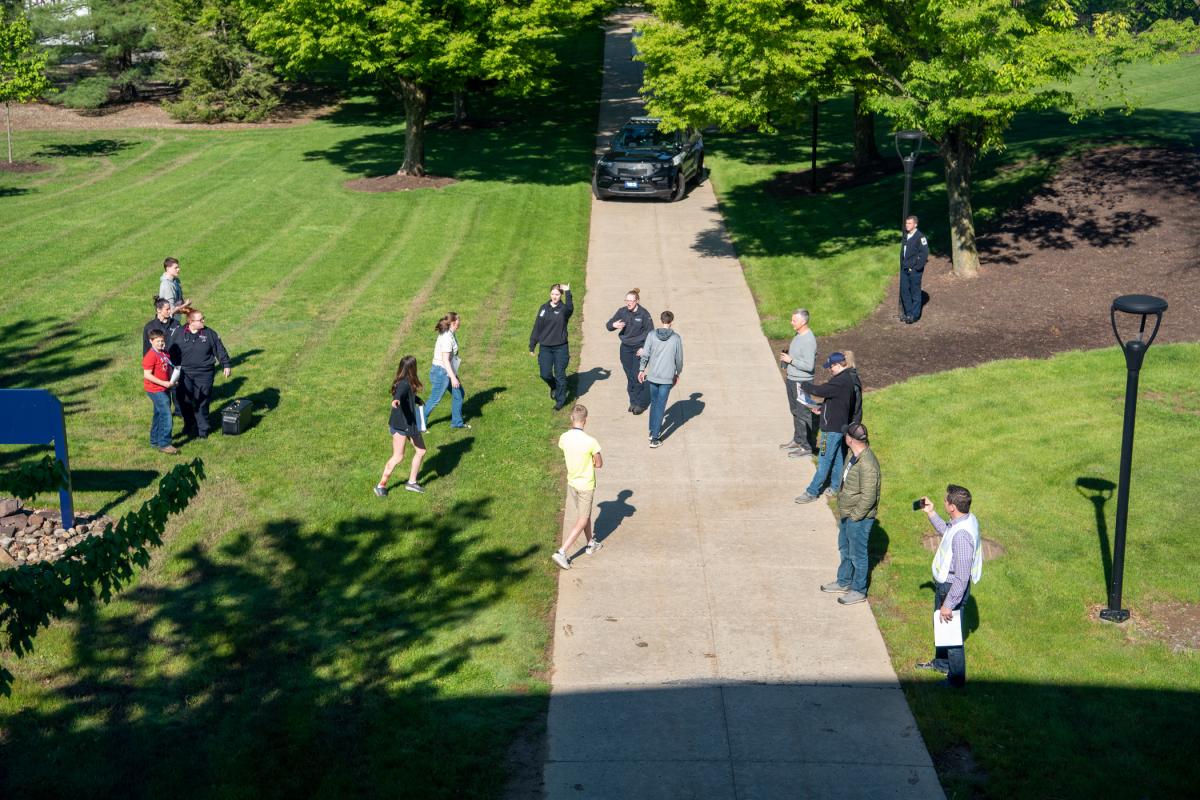
Paramedic students arrive on the scene and motion “victims” who are able to walk away from the main scene.
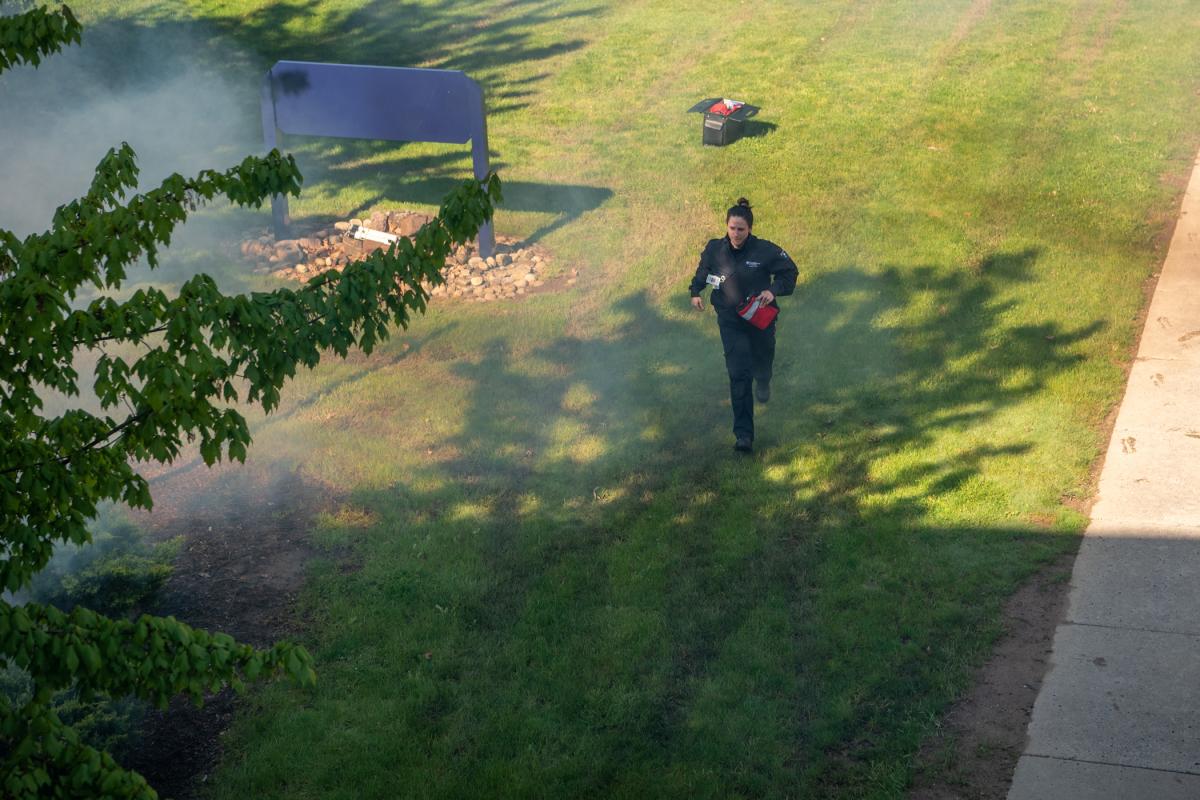
Maggie T. Belokur, a paramedic science student from Towanda, runs to the CC patio.
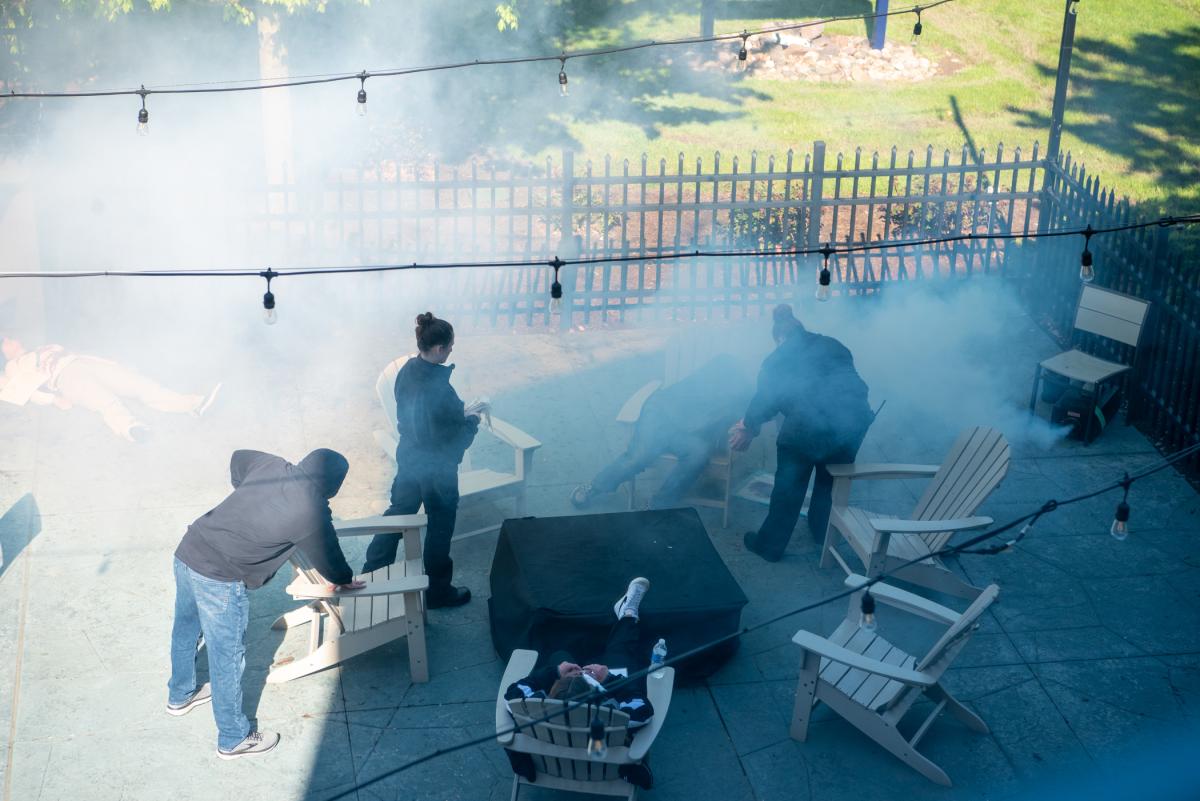
Smoke and sounds were added to the exercise to heighten the intensity for the “first responders.”
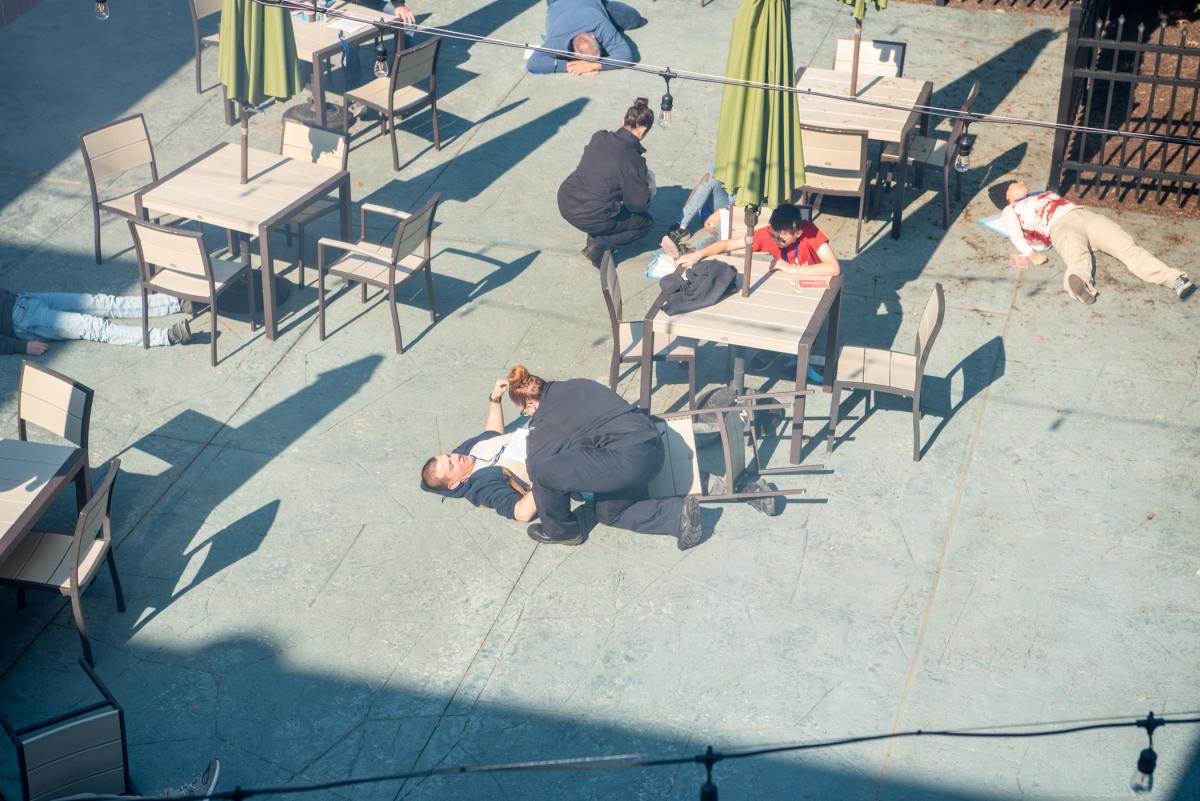
Joining Belokur first on the scene is Emilee K. Snook (center front), paramedic science from Montoursville.
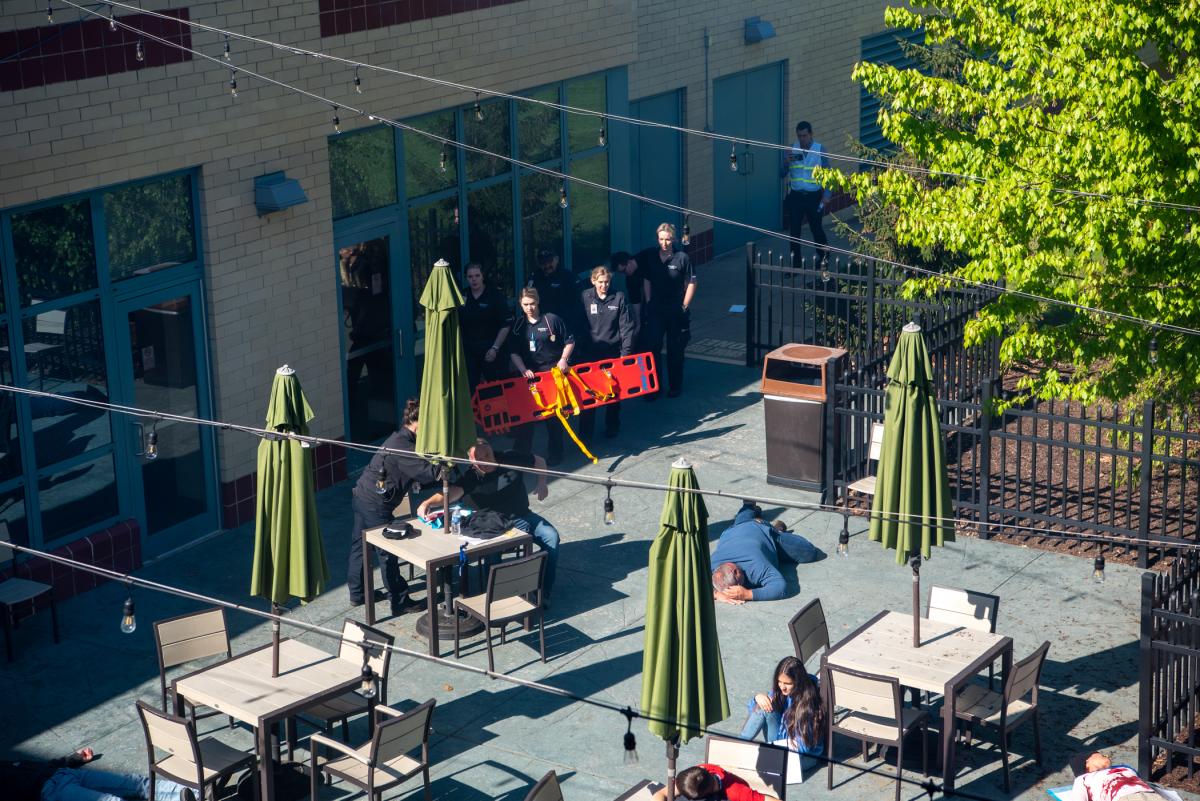
The second wave of paramedics arrive to the scene.
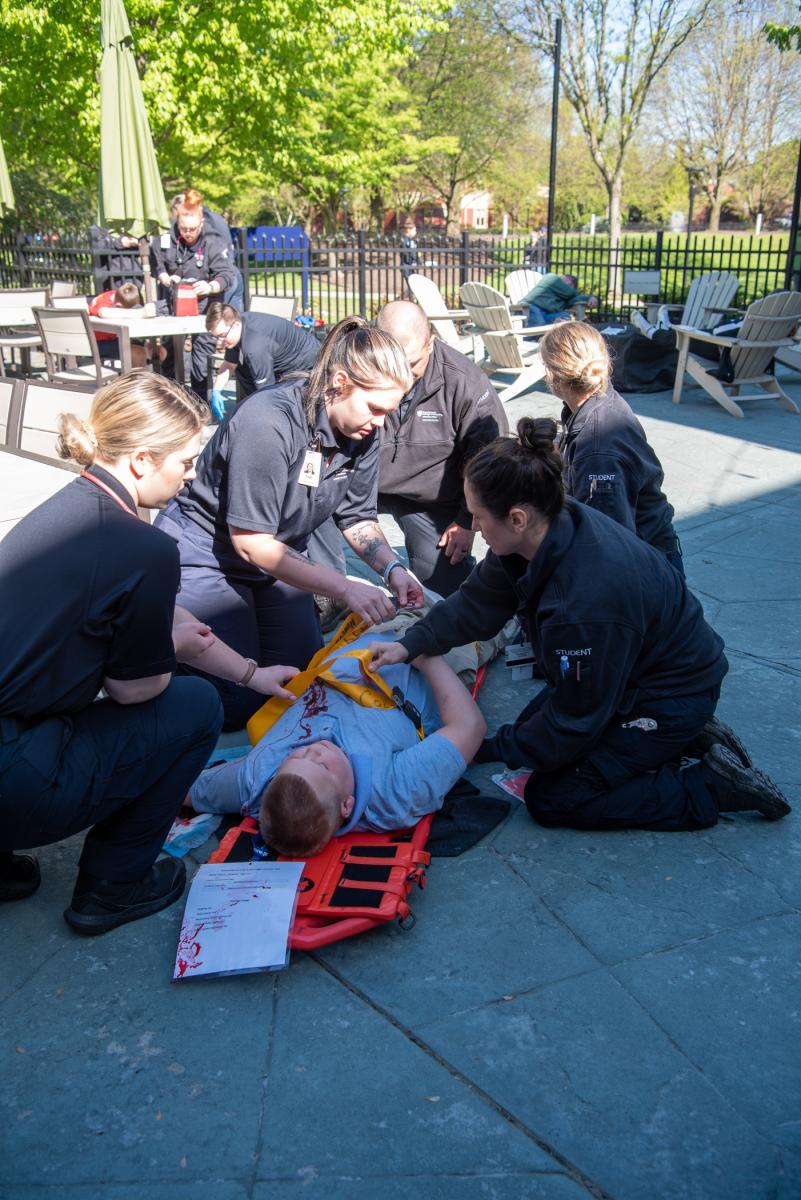
Paramedics load the most critical “patient” onto a stretcher.
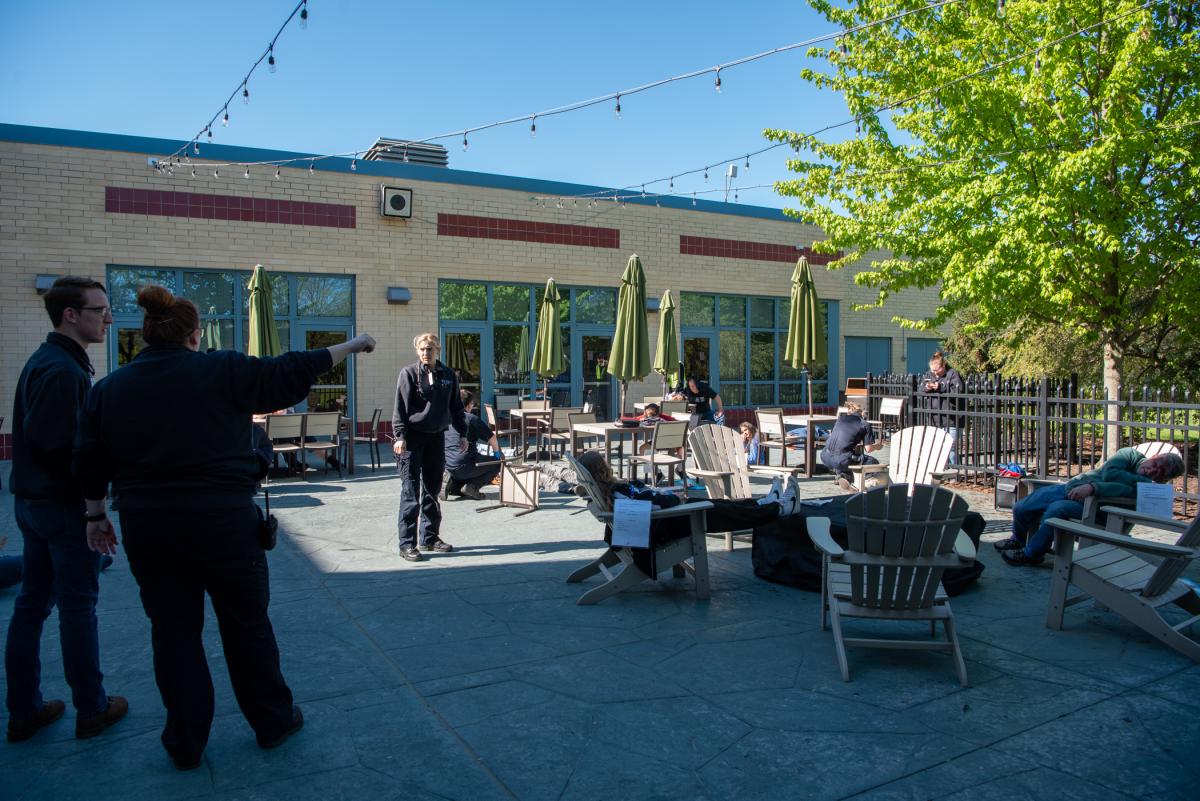
Students continue to assess the scene and injuries.
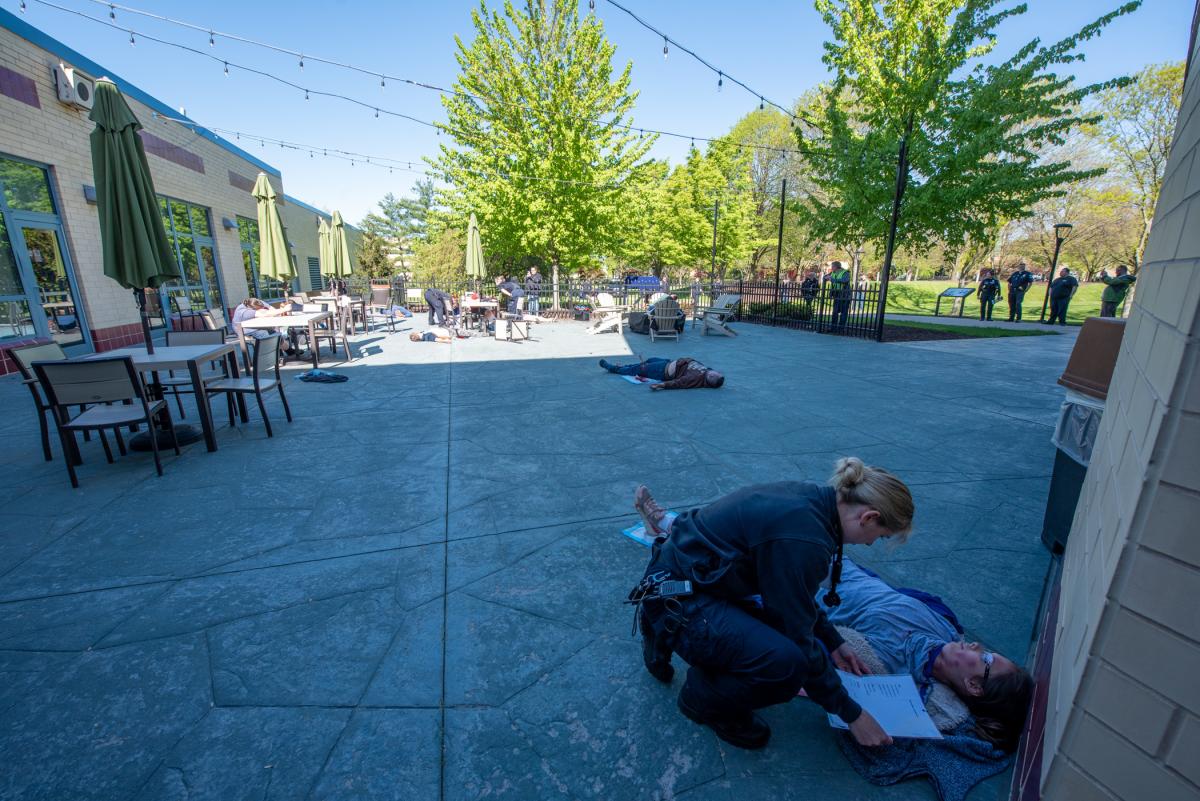
The beauty of the day belies the worst-case scenario.
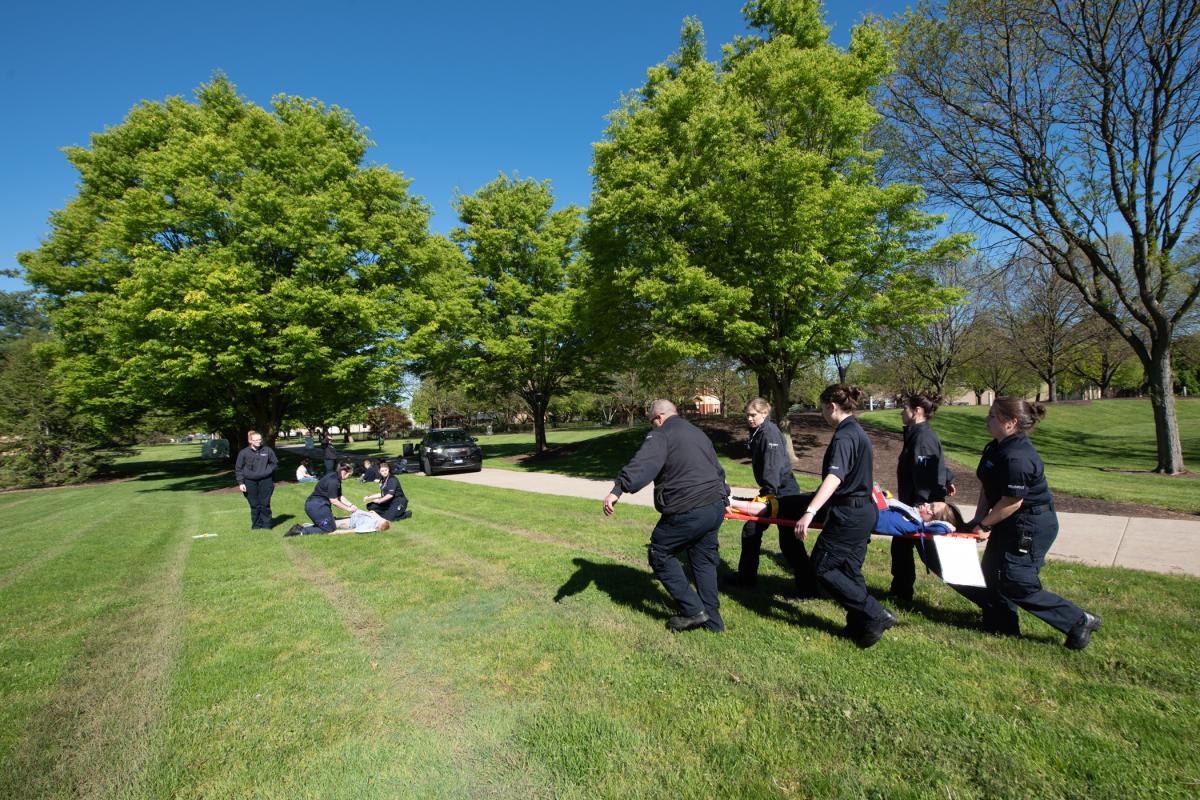
Patients are moved to the CC lawn for “transport” to an emergency care facility.
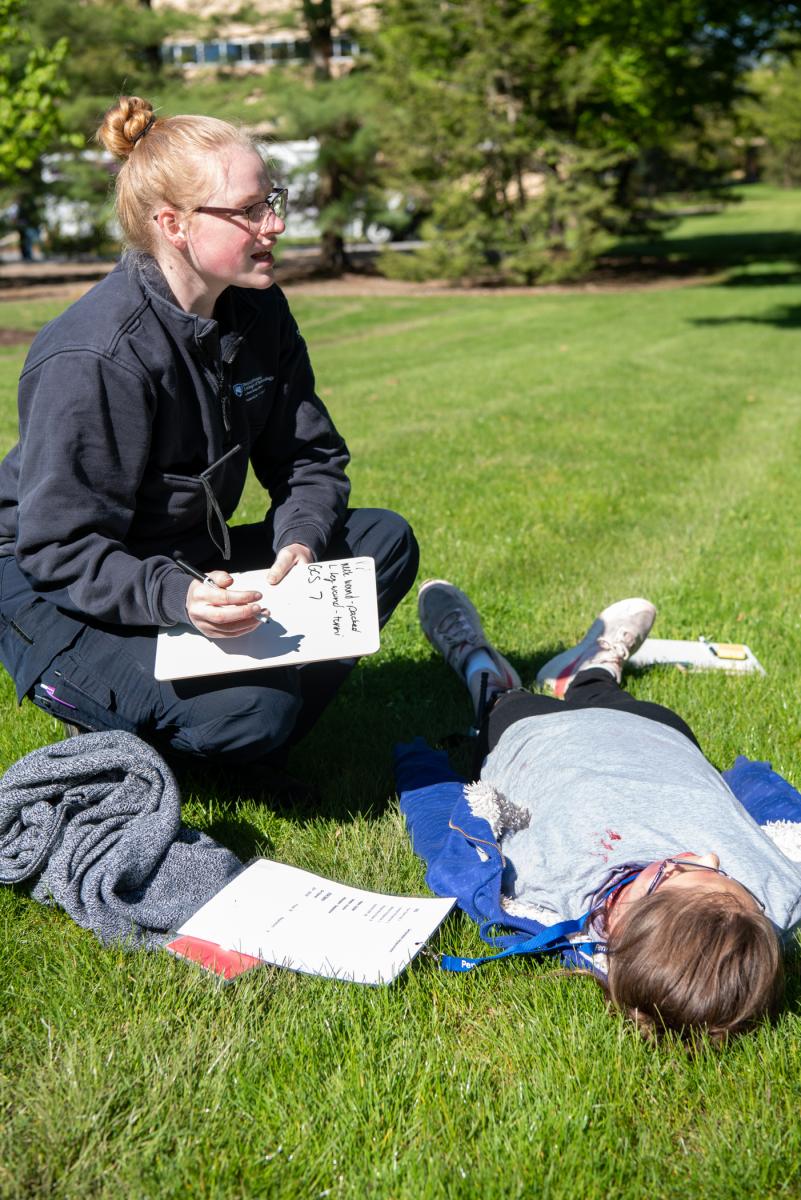
Breyann E. Johnson, a paramedic science student from Danville, tends to her patient.
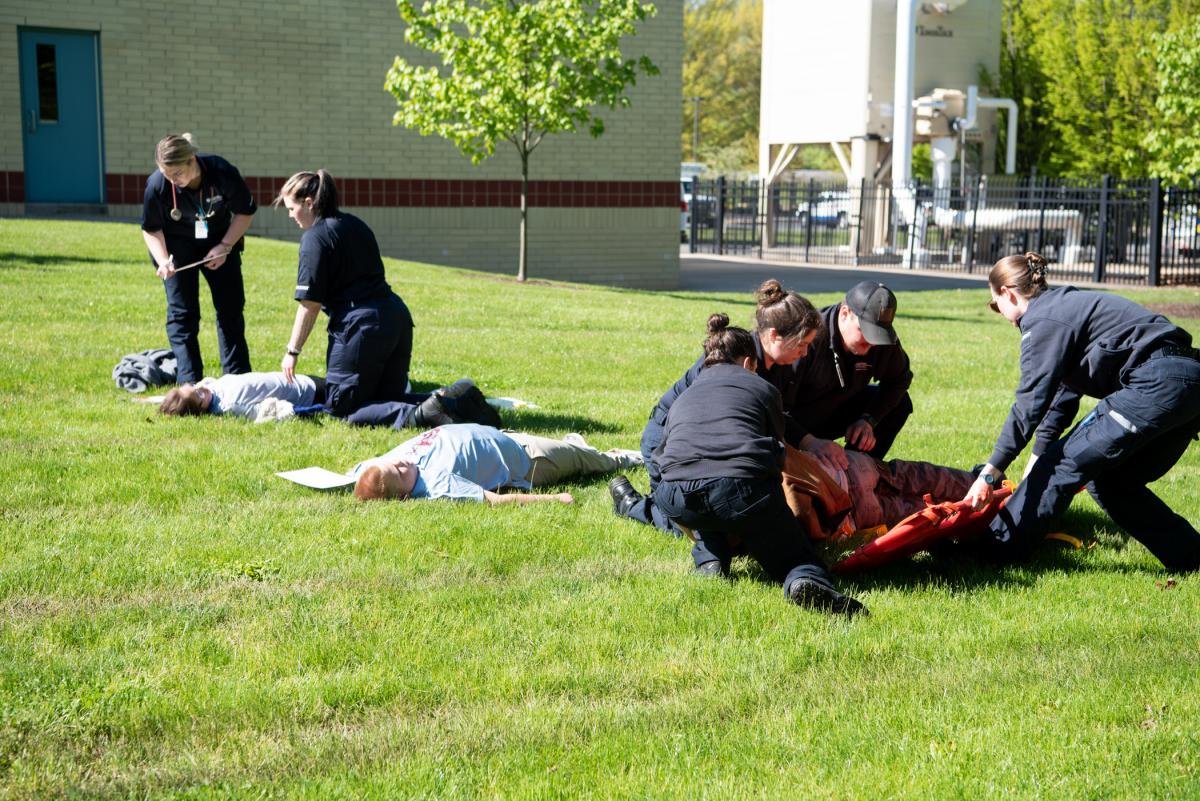
Caring for the injured
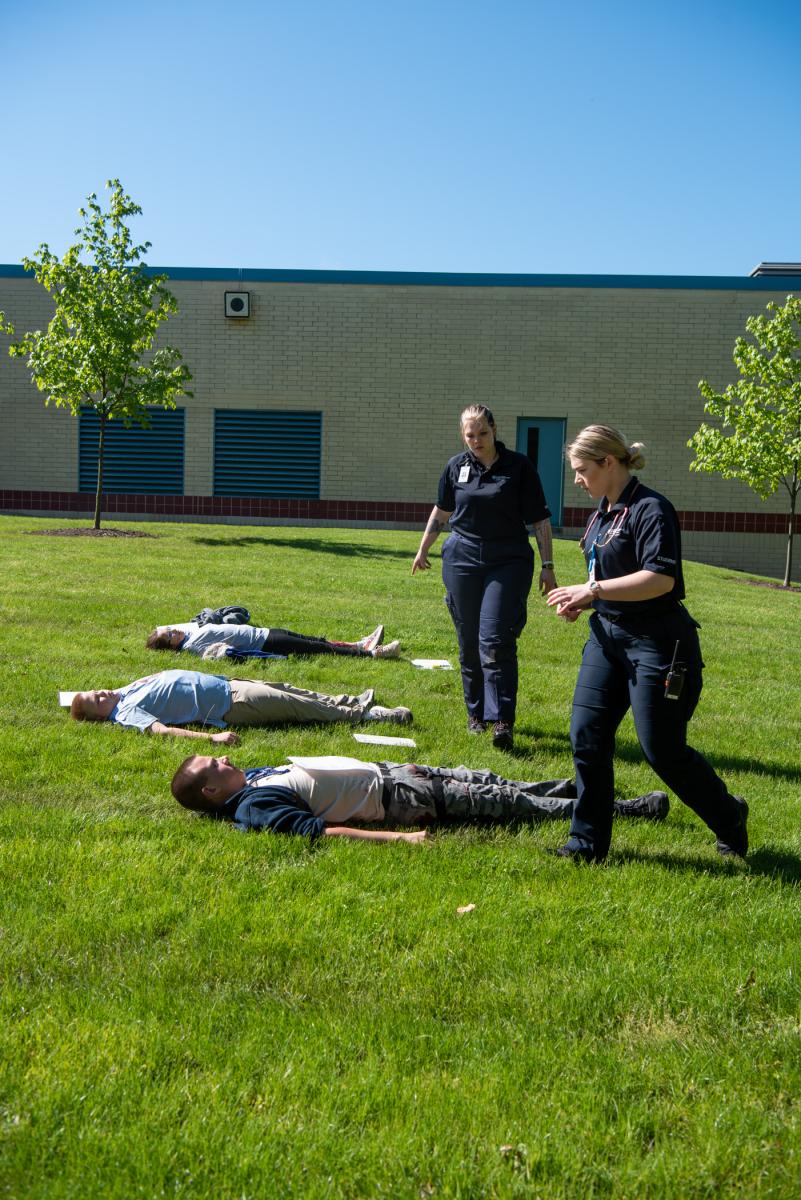
“Wounded” actors also play important roles in the exercise.
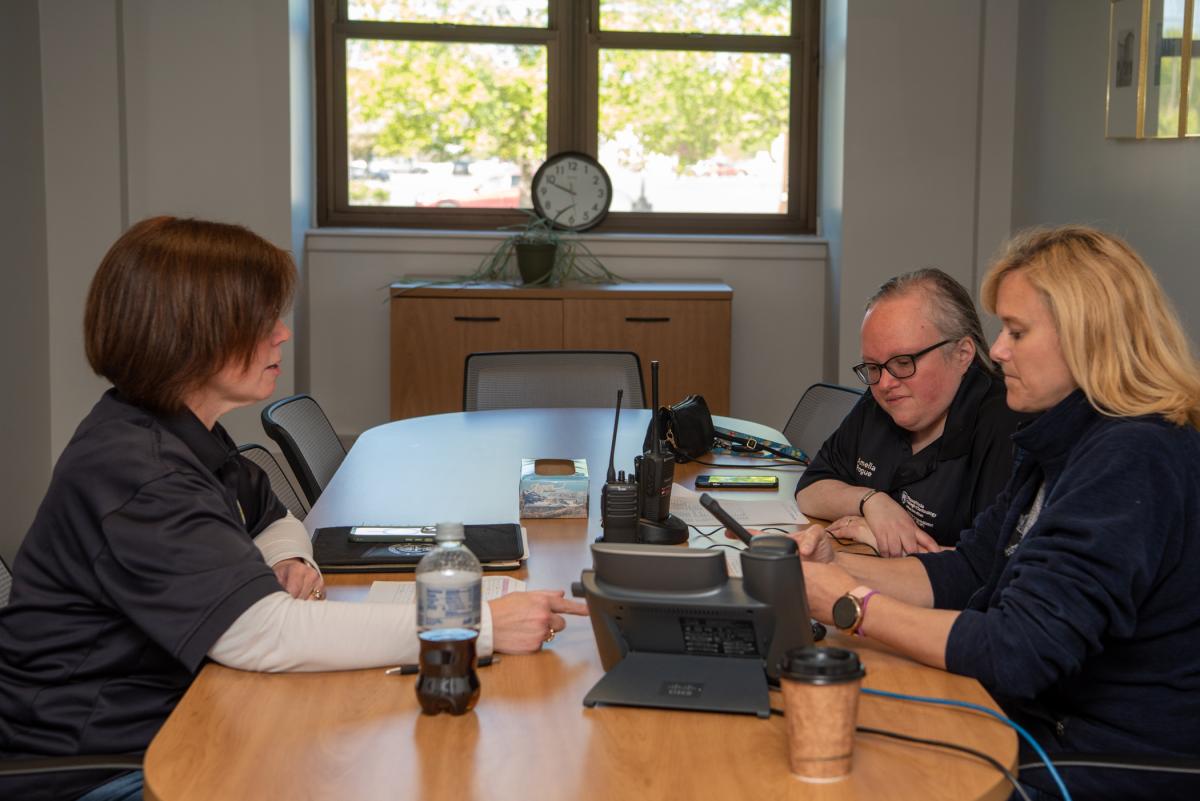
Kelle Robinson (left), coordinator of Lycoming County Emergency Management, serves in the Simulation Cell with Amelia M. Pogue, an emergency management & homeland security senior, and Barb F. Di Marco, assistant dean of arts and sciences. As part of their SimCell duties, the three injected unexpected requests and scenarios into the full-scale exercise.
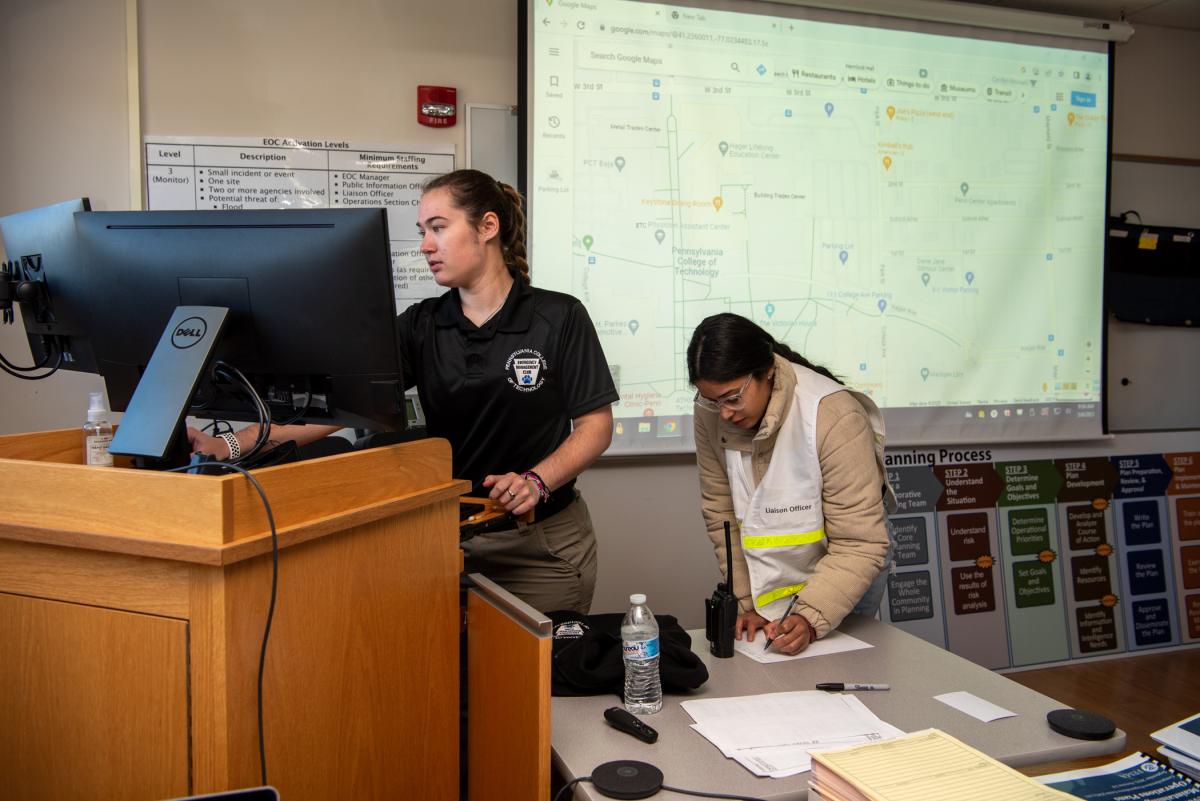
On the fourth floor of the ACC, Nicole R. Lichtinger (left) serves as EOC manager, and Joyce M. Fernandez Rivera is the liaison officer. Lichtinger is from Erie; Rivera is from York.
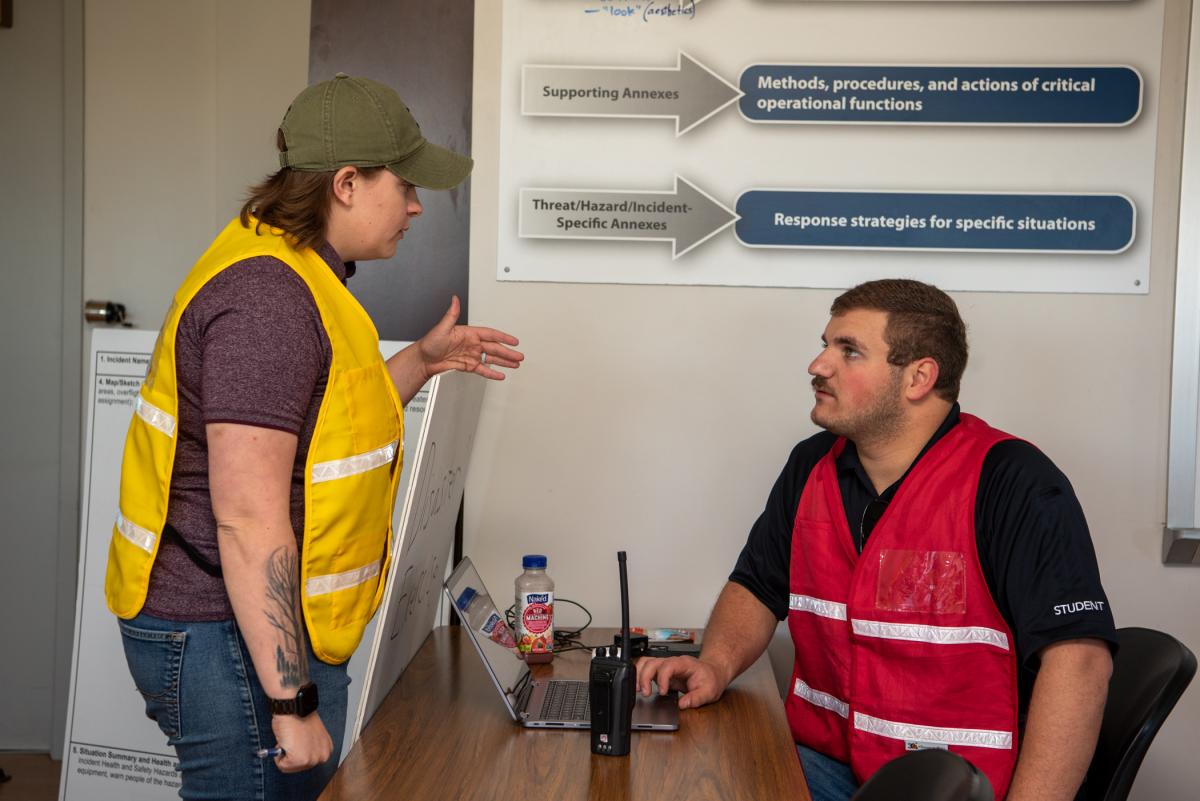
Emergency management & homeland security students Ashley Thoirs-Lawrence, logistics, and Michael J. Gruber, operations section chief, converse. Thoirs-Lawrence resides in Williamsport; Gruber is from Rockville, Md.

William A. Schlosser, emergency management and homeland security instructor, lends expertise.
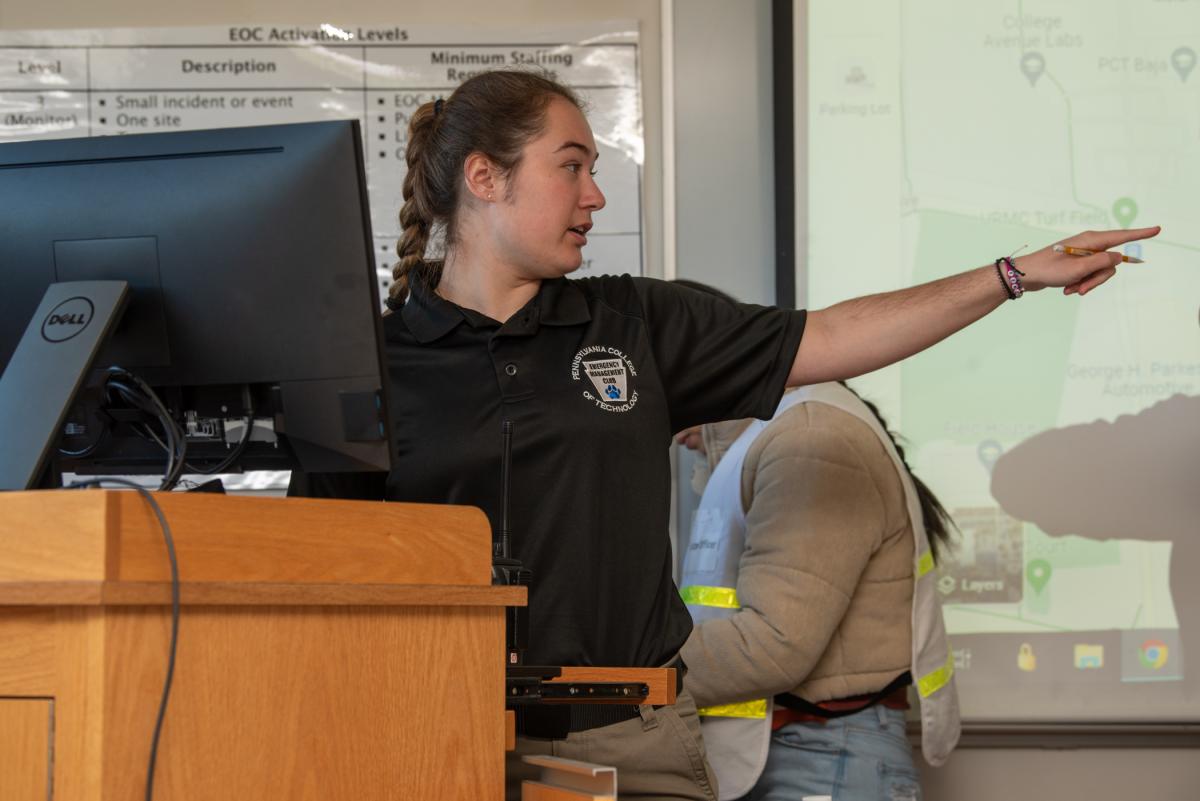
The EOC manager makes decisions.
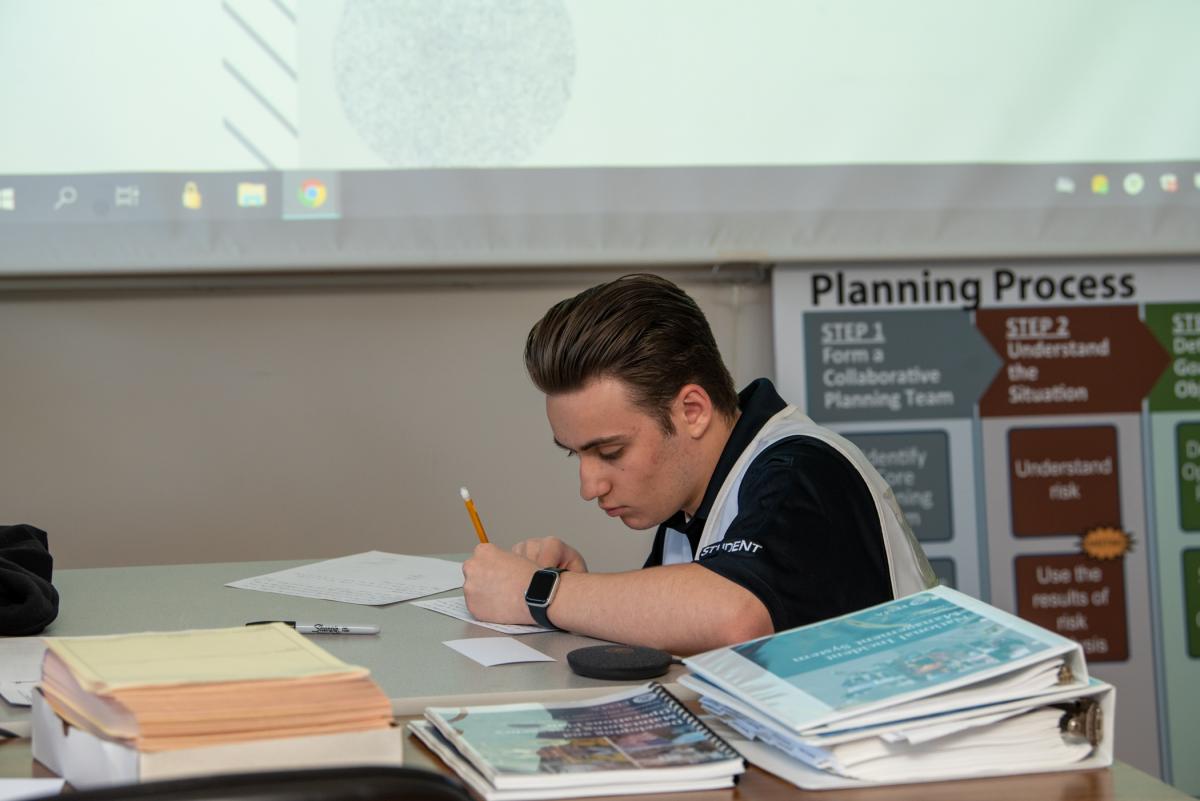
Serving as the public information officer, Ryan Fizer, of Colonia, N.J., prepares a press statement.
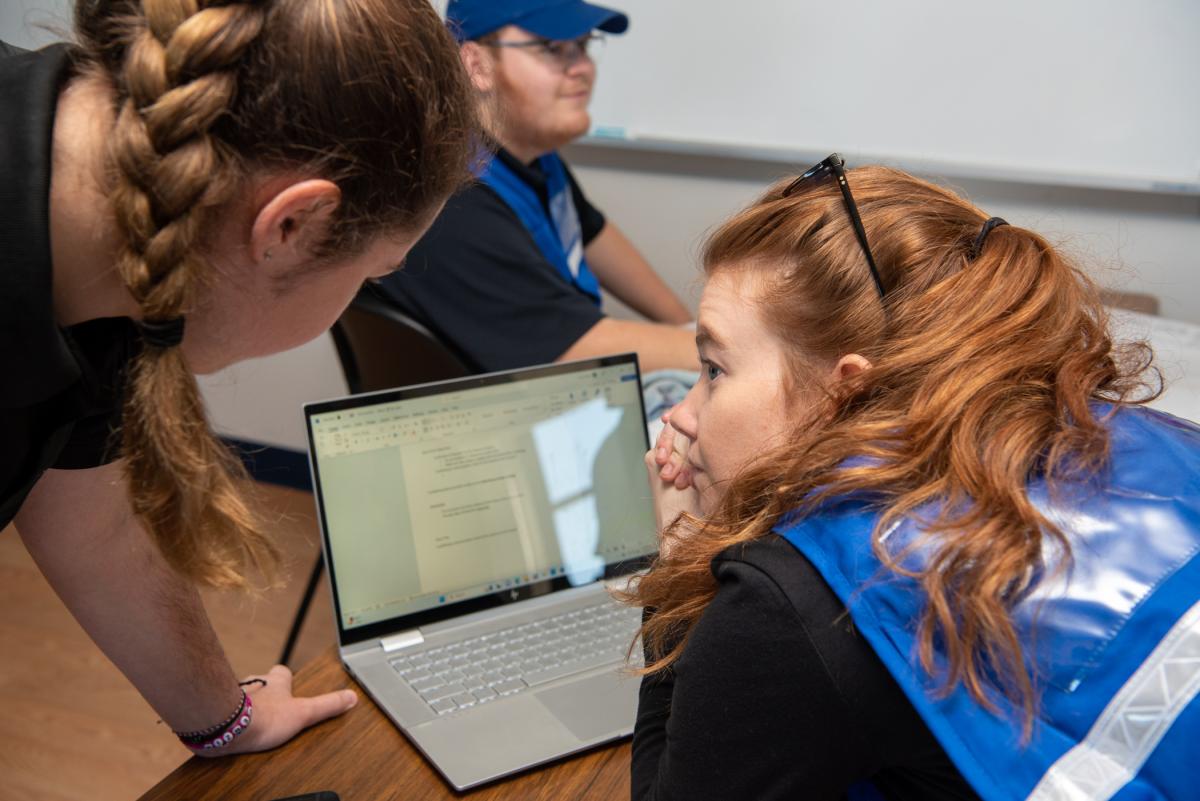
Sierra M. Kunig (right), an emergency management & homeland security student from Pennsylvania Furnace, offers her planning input.
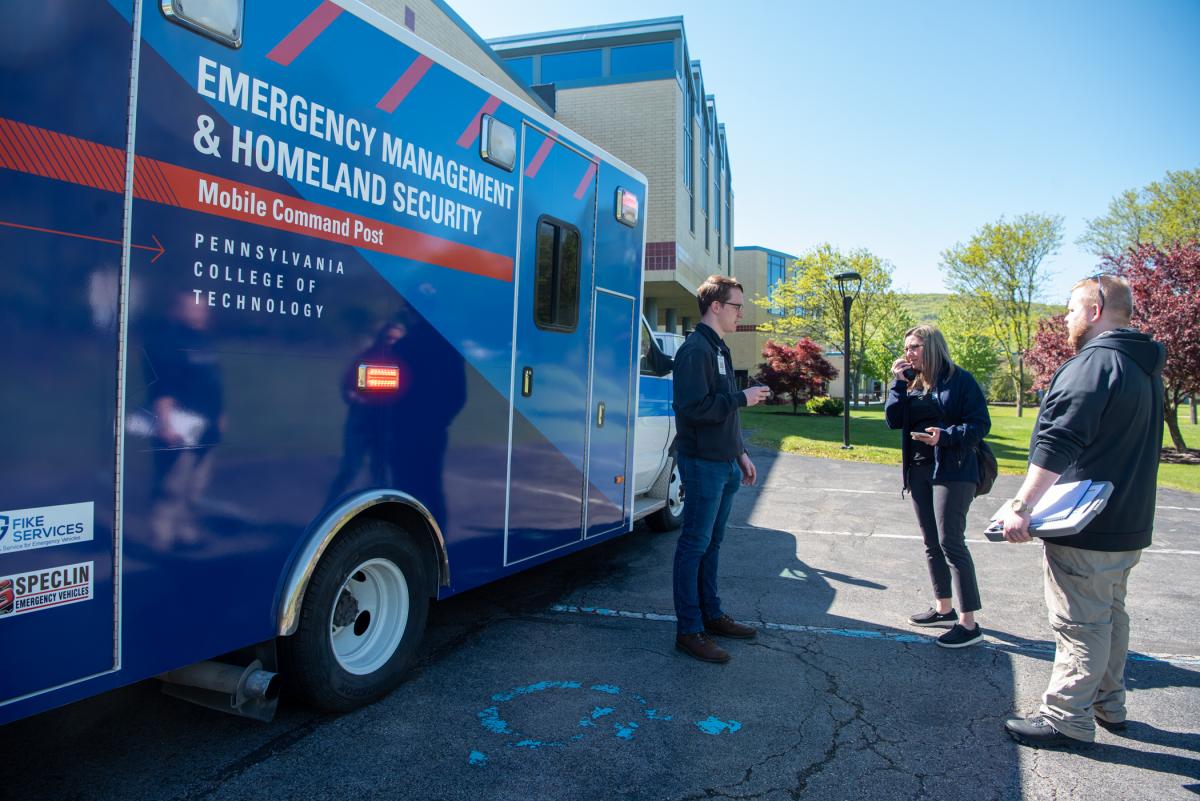
Stationed at the incident command post, Hillyer consults with Rebecca Baker, also serving as a main liaison between personnel. Baker is an emergency management student from Watsontown. Standing by is alumnus Cody R. Couch, ’19, emergency management technology, who works in the field in Washington, D.C.
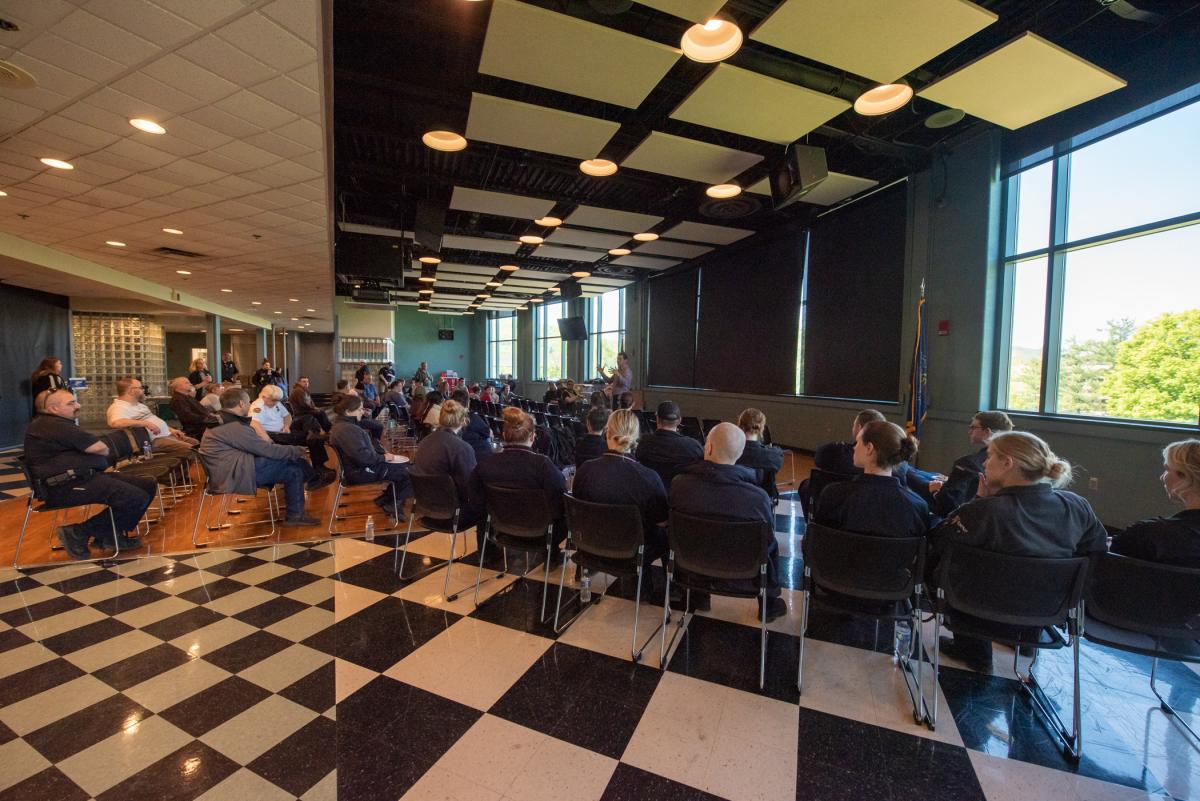
Back at Penn’s Inn for a post-exercise briefing, all participants agree it was a successful morning.
